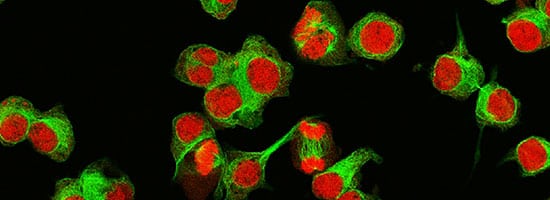Cancer occurs when the body's cells divide and spread without stopping, which is abnormal. While the majority of cases affect adults, about one percent of all cancer diagnoses each year are in children. Unlike cases in adults, cancers in children are usually not linked to environmental or lifestyle factors. Most often, cancers in children are the result of cellular DNA changes that happen early in life or before birth.
Types of Cancers in Children
There are over 100 different types of cancer, which are usually named for the body part where they form. Some names are for the types of cells that formed the cancer, such as squamous or epithelial. There are about eight cancers that most commonly affect children, including Wilms Tumor, which affects the kidneys; retinoblastoma, which is an eye cancer; and rhabdomyosarcoma, which is a form of soft tissue sarcoma affecting cells in skeletal muscles.
Other common childhood cancers include the following:
- Leukemia: The most common childhood cancer is leukemia, which affects blood and bone marrow and accounts for 30 percent of all cases. Leukemia has many types, but the most common in children are acute lymphocytic leukemia (ALL) and acute myelogenous leukemia (AML). These cancers grow quickly and cause weakness, pale skin, bone and joint pain and other symptoms.
- Brain and spinal cord tumors: The second most common type of cancers in children are tumors of the brain and central nervous system, which account for 26 percent of cases. There are many types of brain and spinal cord tumors, but common symptoms include headaches, blurred or double vision, seizures, and other symptoms.
- Neuroblastoma: Developing in infants and very young children, neuroblastoma most often begins in the belly, which will swell as a result. The disease can cause fever and bone pain.
- Lymphomas: Lymphomas usually start in lymph tissues such as the lymph nodes, tonsils or thymus. Bone marrow or other organs may also be affected. Hodgkin lymphoma and non-Hodgkin lymphoma are two main types of the cancer. Symptoms include fatigue, sweats, lumps in the neck, groin or armpit, weight loss, and fever.
- Bone cancers: Osteosarcoma and Ewing sarcoma are the two types of bone cancers that typically affect children. Usually developed in legs or arms when bones are growing quickly, osteosarcoma sufferers tend to feel more pain at night or when they are active. The very rare Ewing sarcoma grows in bones or soft tissue around bones.

